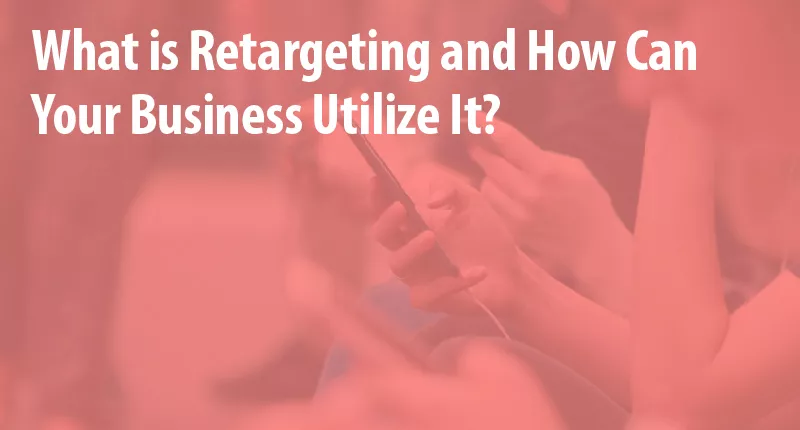
TABLE OF CONTENTS
The marketing practice of retargeting ads and promotions has become a staple for businesses. Which makes sense since advertisements are only partially effective when it comes to getting customers to convert. Effectively retargeting ads can not only help increase the number of people going to your website, but also the customers who have already been to your website but not made a purchase. Without retargeted marketing, the number of people that visit your website versus how many make a purchase is significantly lower.
92 percent of consumers who visit your website for the first time aren’t ready to buy. Maybe they were just browsing at the time or got distracted by something else while they were shopping. It’s possible to get those customers back to your website through the use of retargeting campaigns. Retargeted marketing is an important tool for marketers to help increase sales by connecting with potential customers who have already expressed a level of interest in the business. So what are you waiting for?
What is Retargeting?

You’ve probably experienced a retargeting campaign recently. It works like this: You visit a website or view a product on a website, then leave. Then as you visit other pages around the web, you’ll see banners for that website or different ads will reappear across social media. Amazon uses a great example of retargeting. Their website puts a cookie on your computer so they can identify you on the web and show you ads that are related to what you viewed on Amazon’s website.
Facebook retargeting, Google Ads, and other retargeting platforms enable marketers to complete these campaigns. It’s true that people tend to buy from brands that they know. Customers need to see your message several times before they make their minds up about purchasing from you.
3 Types of Retargeting
There are three types of retargeted marketing approaches you should know about: Retargeted ads, email marketing, and site retargeting. Let’s discuss each of them in more detail.
Retargeted ads
Creating effective retargeting ads takes optimization that is learned through testing. Your display ads will use imaginary, video, and rich media types to engage your audience. Using different display ads for each audience segment will help you find the best format to use when trying to get visitors back to your side. However, the goal remains the same: optimize your ad to make a conversion. There are several elements to focus on when optimizing the ad:
- Headline. An engaging headline should also remind the visitor of their last experience with your website. Since it’s the first thing a person will see, the headline should grab their attention.
- Media. This is the use of relevant and visually appealing media that’s also relevant to the offer that will be explained in the copy. The media could be anything from a static image to a cartoony animation.
- Call-to-Action. A click-worthy CTA has actionable, personalized copy using contrasting colors.
- Content. You have limited space for copy, so getting to the point fast and offering an incentive to click is important. Make sure you’re constantly brainstorming innovative content ideas for social or other platforms.
Email marketing
Email is still a great way to reach customers and affect their purchase decision-making process. Based on the way that a user interacts on your website, emails can be retargeted to them to encourage a sale. For example, let’s say that a potential customer signs up on your website to subscribe to your email list. They go on to view a certain product, but they don’t make a purchase. This action could trigger a retargeting email highlighting the product for them again. Email automation marketing is a great solution to enable if you don’t already have it and can make all the difference in your overall marketing strategy.
Site retargeting
This type of retargeting shows display ads to people who have browsed your website who didn’t complete a purchase. Basically, these are potential customers who have shown interest in your products/services by visiting your website. This type of retargeting marketing is effective because there is greater brand recognition, thus a higher ROI.
Using the information from a person’s site visit, site retargeting will work to understand their intent. Ads will be served to help encourage them to revisit your site and make a purchase. More basic retargeting ads will show the ad that the user left in their shopping cart or viewed the most. Product recommendations and dynamic creative optimization will deliver more personalized ads with a more sophisticated retargeting approach.
The Benefits of Retargeting
Retargeting has many advantages that have made it a popular tool among marketers. For starters, it’s cost-effective. This is because you’re focusing on potential customers who have shown some level of interest and are already aware of your brand. No need to conduct an in-depth target market analysis.
Retargeting ads contribute to a significant increase in average conversion rate as compared to normal display ads. Again, part of the reason that retargeted marketing is so effective is that the customer has already expressed interest in your product/service as indicated by their web visit.
The Difference Between Retargeting and Remarketing

It’s common to mix up the terms “retargeting” and “remarketing,” as they are both intended to reach the same goals. Both of these marketing campaigns are targeting the audience that has visited your website and is aware of your brand. However, the tactics that are used in each method are what sets them apart from one another.
To begin with, remarketing typically refers to all of the different methods to collect prospective clients’ information and market to this existing audience. Retargeting on the other hand makes use of paid ads to target audiences that have visited your social media or website.
How to Retarget Your Customers
There are three ways that you can set up a retargeted campaign by segmenting your audience by behavior, time, or existing customer. Let’s dive in.
1. Examine behavior
You’ll observe two types of behavior when a user visits your website. If they spend a few seconds on your page and immediately leave, that’s an indication they’re not interested. Visitors who browse a website and click through to other pages or view specific products are interested.
You’d remove those visitors in the “not interested” segment since they aren’t likely to result in a favorable ROI. Those in the “interested” segment have a much higher probability of purchasing something from you so these are the visitors you would use a retargeted marketing campaign on.
2. Make note of the time
Another strategy is to retarget your visitors by time. This includes the following three components:
- The time from when a visitor browsed the website to when they see the first ad
- The frequency at which visitors see certain ads
- The time between a visitor’s first visit and when they stop seeing the retargeting ads
3. Pay attention to your current consumer base
Targeting existing customers is another strategy that works particularly well after a new feature or update to pricing occurs. This is especially effective when using for customers that haven’t been active for a while. A new update or promotion could be enough to convince them to buy again.
The Best Way to Optimize Retargeting Ads
Retargeted marketing is meant to be used as a long-term strategy for businesses to get at least 100 visitors a month. No one marketing channel is enough to ensure you’re maximizing sales. Taking an integrated approach will keep your costs down and keep customers from falling through the cracks.
If you’re still unsure of the best ways to optimize your retargeting strategy, reach out to a service provider. Many times these professionals will have consumer insight that you may be missing.
Conclusion
It generally takes a few months to see a return on retargeting so make sure you’re committed to this form of digital marketing. After that, you’ll have to work continuously on testing and tweaking your message. The better you get to know your audience, the more effective your retargeted ads will be. Don’t be discouraged if you don’t yield results right away. As we said earlier, retargeting is a long-haul method for reaching your customer base. Hopefully, after you’ve read this article you are feeling more confident in your retargeting strategy and are energized to start optimizing your ads effectively.





